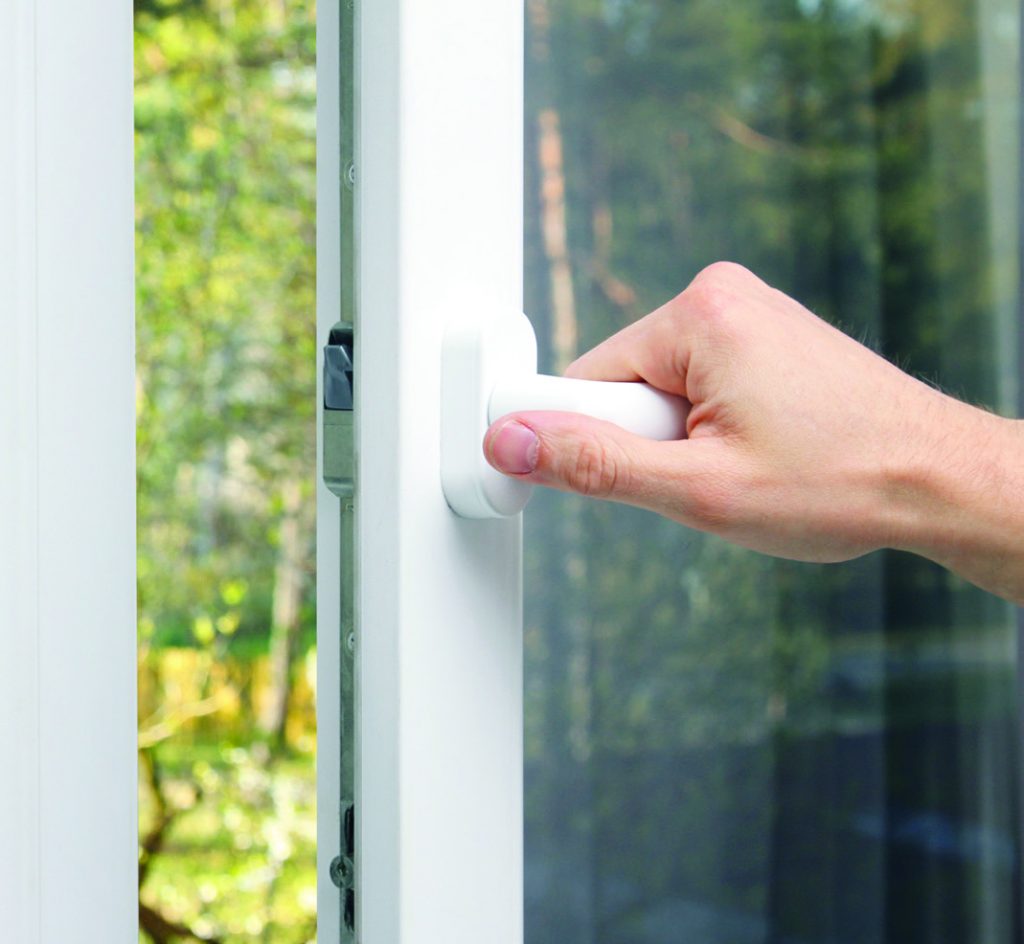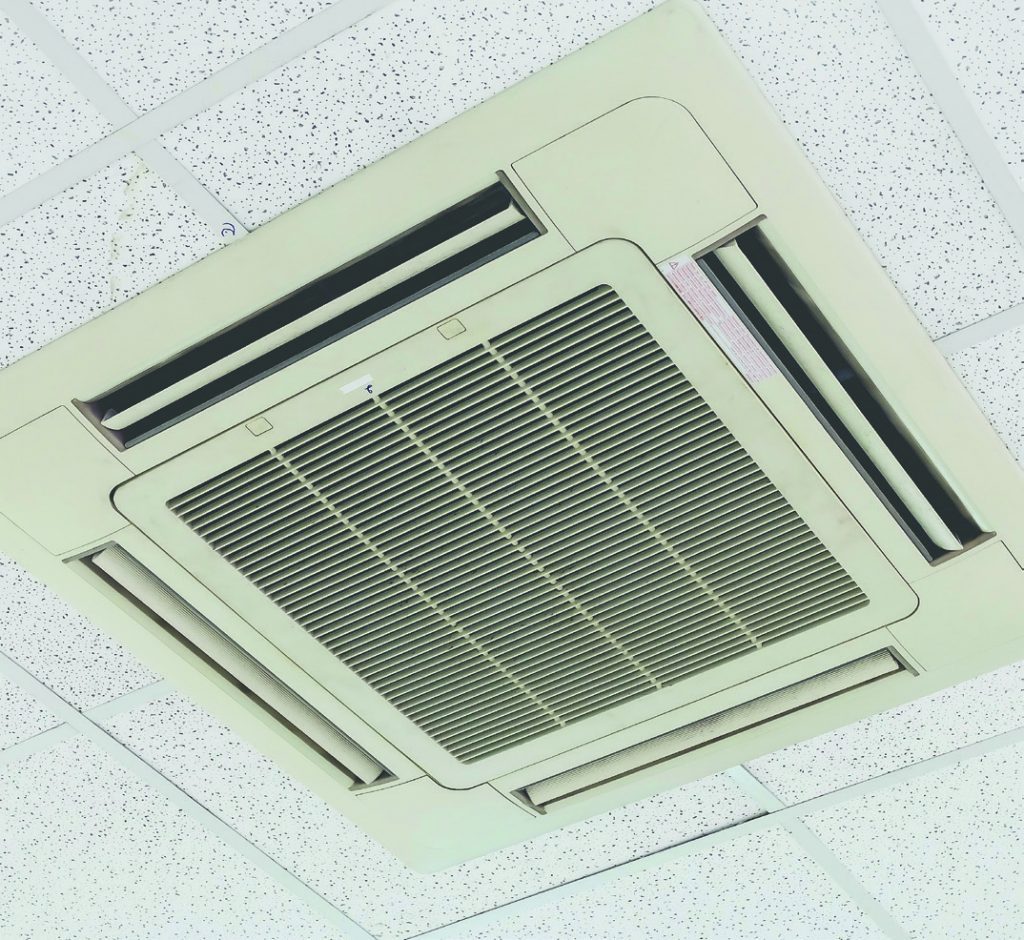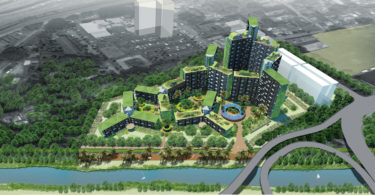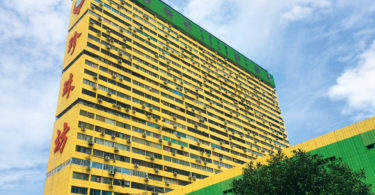The overall health of your body and mind, in a great degree, depends on the air you breathe. Nowadays, people tend to forget about the importance of fresh air and underestimate air pollution and the health effects of bad indoor air quality. The World Health Organization (WHO) recently reported that up to 4.3 million people worldwide die annually from exposure to household air pollutants.
As we are spending more time in air-conditioned spaces these days, which recirculate most of the indoor air, there is a need to better understand the air that we breathe and the hazards of inadequate fresh air in buildings.
WHY WE SHOULD BE CONCERNED
Indoor air is constantly polluted by volatile organic compounds (VOCs), as well as PM10 or PM2.5—small and very fine particulate matters measuring 10 and 2.5 micrometres or less, respectively, in diameter.
According to the United States Environmental Protection Agency, VOCs can cause eye, nose and throat irritation; headaches, loss of coordination and nausea; as well as damage to the liver, kidney and central nervous system. Some organics can cause cancer in animals, while some are suspected or known to cause cancer in humans. In addition, exposure to excessive PM2.5 has been linked to a higher risk of premature death, and these very fine particles have been found in brain cells that cause Alzheimer’s and dementia.
More alarmingly, recent studies have shown that air pollution enters our blood stream not only from our lungs, but in equal amounts through our skin as well. To put the risk of air pollution into context, a typical person eats about 1 kilogram of food a day and drinks about 2 kilograms of water a day, however, we breathe about 15 kilograms of air per day. Adding the equivalent air pollutants entering through our skins, we are exposed to 30 kilograms of air per day.
Based on these facts, if 5 per cent of the air is polluted, we would be exposed to 1.5 kilograms of pollution from the air per day. Even if the food we eat were 100 per cent chemically produced, it would only be equivalent to 1 kilogram of pollution per day. In short, if we are concerned about eating organic food and drinking filtered water, we should be infinitely more concerned with the air we surround ourselves with.
TOO COOL FOR OUR OWN GOOD?
Malaysia is a tropical climate with high temperatures and humidity. The climate in Kuala Lumpur does not offer optimal comfort most of the time—the average temperature of the day hovers around 30 degrees Celsius. Hence, the use of air-conditioning is getting more common.
The typical air-conditioner used in Malaysian homes are split-unit air-conditioning systems, which do not provide any fresh air intake. It continuously recirculates the air within the space as the fastest means to cool the space down. Fresh air is assumed to be provided via infiltration through the manual occasional opening of doors/windows and leakages along the cracks/joints of window and door frames. In recent years, the construction standards in Malaysia have become more air-tight as houses and buildings are designed for the use of air-conditioning, reducing the amount of fresh air that can leak into our houses and buildings.
The lack of fresh air causes VOCs, PM2.5 and other contaminants to accumulate indoors. It also leads to reduced oxygen levels, which causes people to feel tired, sleepy and less productive. Fresh air is required to dilute indoor air contaminants and to introduce oxygen to air-conditioned spaces.
Most high-end offices, hotels and hospitals using centralised air-conditioning systems have an inbuilt fresh air supply system to maintain indoor air quality. Homes and buildings that rely only on split-unit air-conditioning systems depend on building leakages to provide fresh air. Unfortunately, building leakages are difficult to control, and we will not know if we are getting enough fresh air without the use of suitable monitoring equipment, such as a carbon dioxide (CO2) sensor.
BALANCING ENERGY CONSUMPTION
However, there is a flipside to too much fresh air. If we leave our windows wide open while the air-conditioning is on, it will increase energy consumption significantly. Malaysian outdoor air is hot and humid, and the more fresh air is allowed in, the harder the air-conditioner has to fight to pull the humidity and heat out of the air to cool the space down.
SOURCES OF INDOOR AIR CONTAMINANTS
The main sources of indoor air contaminants that produce VOCs are plastic-based products, furnishing and building construction finishes, such as paint, glue, varnish, carpet, sealants and compressed wood from kitchen cabinets. Glue that is used to bind wood chips into compressed woods emits high VOCs that can last for many years after installation.
Formaldehyde is a distinctive VOC gas that is emitted from wood-based products, varnish, compressed particleboards, plywood, fibreboards, wood-based glue and adhesives. It is usually identified separately due to its particularly harmful effect on health and link to cancer.
In advanced countries, there are regulations to regulate the amount of VOCs allowed to be emitted by building construction finishes. Malaysian manufacturers that export kitchen cabinets, furniture and other products to Japan and Europe, for example, comply to these requirements. However, for our own Malaysian market, conventional glue and paint are used instead as the demand is for cheaper goods.
Another source of indoor VOCs is the use of chemicalbased agents—such as cleansers, solvents, pesticides, disinfectants, glues, paints, etc—and plastic-based products, which include almost all household items.
While new products (such as new car or new building) usually have a higher rate of VOC off-gassing, disintegrating and rotting items (such as very old carpets or clothing) will also have a high rate of VOC off-gassing. This is why clothing kept in cupboards for a long time or old buildings usually produce a funny smell.
By now, we should come to realise that VOCs are linked to bad or weird indoor smells. In fact, the best VOC detectors are not scientific equipment, but our noses. Women tend to be more sensitive to VOC smells than men, and pregnant women are known to be even more sensitive—somehow, mothers are preprogramed to protect and safe-guard the baby in their wombs from exposure to air pollution.
Small particles of PM10 and PM2.5 are caused when grilling and frying food, or when wood or charcoal is used for cooking. These very fine particulates are small enough to enter our lungs, and sometimes blood stream, and are trapped in us forever, leading to reduced lung functions and capabilities (shorter stamina), increased risk of cancer, and are linked to dementia and Alzheimer’s. CO2 is often identified as a source of air contamination also and is usually used as an indicator of the quality and quantity of oxygen available in an enclosed space. In a building environment, the technology to measure CO2 is simpler, cheaper and more affordable to maintain than an equipment to measure oxygen.
Due to this, scientists and engineers have developed guidelines to ensure good health and optimum productivity while minimising energy use. The better-known guidelines are:
• ASHRAE 62.1 and 62.2: Ventilation and indoor air quality (American)
• EN 13779: Ventilation for non-residential buildings: Performance requirements for ventilation and room-conditioning systems (European)
• EN 13141: Ventilation for buildings: Performance testing of components/products for residential ventilation (European)
According to ASHRAE 62.1, the recommendation for minimum fresh air (measured in litres per second, or l/s) for air-conditioned bedrooms is 2.5 l/s per person + 0.3 l/s per square metre of bedroom space.
For example, in a 12-square-metre bedroom with two occupants, the fresh air ventilation rate required is: (2.5 l/s per person x 2 persons) + (0.3 l/s per square metre x 12 square metres) = 54.6 l/s.
This fresh air can be provided by installing an extraction ventilation fan in the bedroom (or bathroom connected to the bedroom) that will provide a minimum airflow of 54.6 l/s.
In Malaysia, residential homes are not required to provide mechanical fresh air intake because it is based on yesteryear’s assumptions that all houses in Malaysia are naturally ventilated all the time. Therefore, Malaysian building codes only require windows to be provided in all habitable spaces.
In terms of high-grade commercial buildings, such as offices, hotels and retail malls, the engineers in Malaysia have been following the ASHRAE 62.1 as their design guide. However, it has also been encountered that fresh air intakes are closed in some buildings. This is likely because of an emphasis
on saving energy by reducing the fresh air intake without a full understanding of the need for fresh air in a building.
Finally, anyone may purchase a range of air-monitoring devices to ensure that air quality is well maintained at all times. By monitoring the air temperature, CO2, total VOCs and PM2.5, one can choose the right time to open or close the windows to keep the house cooler, dilute the VOCs and PM2.5, and replenish the oxygen levels.
Malaysia Green Building Confederation (MGBC) supports the certification of buildings, such as the Green Building Index (GBI), that ensure that buildings are built using low-VOC construction materials and finishes, with an adequate supply of fresh air, with low-energy consumption at the same time.
The Energy Commission building in Putrajaya, the DIGI Technology Operation Centre in Shah Alam, and Hotel Penaga in Penang, are examples of such buildings that have been designed to meet international guidelines for minimum fresh air supply. They are installed with CO2 sensors and the air has been flushed before the building’s handover.
C. K. TANG
Tang Chee Khoay is a board member for MGBC and chairman for Green Pages Malaysia. He has been conducting building performance simulation in Malaysia to predict and understand building behaviour and energy use. He also provides training on designing energy-efficient buildings for public works architects and engineers.
Graduating from Wichita State University in 1993 in Mechanical Engineering, Tang joined Integrated Environmental Solutions Ltd in 1997. Under Danish International Development Assistance (DANIDA), he contributed to the revision of MS 1525, the Malaysian Standard energyefficiency code for non-residential buildings.
 ZOALY RAMBELOARISON
ZOALY RAMBELOARISON
Zoaly Rambeloarison is currently a Master’s engineering student at the Department of Construction and Energy, Reunion Island and Indian Ocean Engineering School (ESIROI) of the University of La Reunion. She is following an internship at VERITAS.
Her specific field of study is in sustainability in buildings, including energy efficiency, renewable energy systems, and energy simulation of buildings (thermal, lighting, acoustic and air flow aspects), with particular regard to tropical climates. She is engaged to develop both critical-thinking as well as effective communication skills in this domain.

 Hong Kong
Hong Kong Singapore
Singapore Indonesia
Indonesia Tiếng Việt
Tiếng Việt ประเทศไทย
ประเทศไทย












